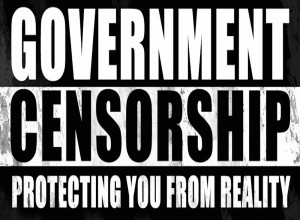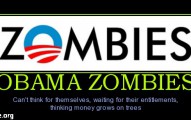September 13, or Elul 29 on the Hebrew calendar has finally arrived, and is occurring on a day in which the markets are closed for primary trading. However, with Asia beginning their Monday open while the West still resides in the Shemitah for a few more hours, the opportunity for market chaos because of the frequency of this event is still alive and well, and will continue at least until the Fed announces its policy changes for the coming months this Thursday.
The idea behind the Shemitah is that it entails a spiritual law from God that requires man to heed certain economic requirements when it comes to debts, land, finances, and even agriculture. Every seven years the land, (or in this case markets), must be allowed to remain fallow, and with little productivity so that the economic system can use this year to dissolve toxic assets and prepare the land (or markets) for new blessings. However, when man chooses not to heed this commandment or policy, nature itself will force a dissolution of wealth, and we have seen this occur time and time again in the markets going back as far 1873 in modern times.
| Panic of 1873 | 9 May 1873 | Initiated the Long Depression in the United States and much of Europe | ||
| Panic of 1884 | 1884 | |||
| Panic of 1893 | 1893 | |||
| Panic of 1901 | 17 May 1901 | Lasting 3 years, the market was spooked by the assassination of President McKinley in 1901, coupled with a severe drought later the same year. | ||
| Panic of 1907 | Oct 1907 | Lasting over a year, markets took fright after U.S. President Theodore Roosevelt had threatened to rein in the monopolies that flourished in various industrial sectors, notably railways. | ||
| Wall Street Crash of 1929 | 24 Oct 1929 | Lasting over 4 years, the bursting of the speculative bubble in shares led to further selling as people who had borrowed money to buy shares had to cash them in, when their loans were called in. Also called the Great Crash or the Wall Street Crash, leading to the Great Depression. | ||
| Recession of 1937–38 | 1937 | Lasting around a year, this share price fall was triggered by an economic recession within the Great Depression and doubts about the effectiveness of Franklin D. Roosevelt‘s New Deal policy. | ||
| Kennedy Slide of 1962 | 28 May 1962 | Also known as the ‘Flash Crash of 1962′ | [7] | |
| 1973–74 stock market crash | Jan 1973 | Lasting 23 months, dramatic rise in oil prices, the miners’ strike and the downfall of the Heathgovernment. | ||
| Black Monday | 19 Oct 1987 | |||
| Japanese asset price bubble | 1991 | Lasting approximately twenty years, through at least the end of 2011, share and property price bubble bursts and turns into a long deflationary recession. Some of the key economic events during the collapse of the Japanese asset price bubble include the 1997 Asian financial crisis and the Dot-com bubble. In addition, more recent economic events, such as the late-2000s financial crisis and August 2011 stock markets fall have prolonged this period. | ||
| Black Wednesday | 16 Sep 1992 | The Conservative government was forced to withdraw the pound sterling from the European Exchange Rate Mechanism (ERM) after they were unable to keep sterling above its agreed lower limit. | ||
| Dot-com bubble | 10 March 2000 | Collapse of a technology bubble. | ||
| Economic effects arising from the September 11 attacks | 11 Sep 2001 | The September 11 attacks caused global stock markets to drop sharply. The attacks themselves caused approximately $40 billion in insurance losses, making it one of the largest insured events ever. Seeworld economic effects arising from the September 11 attacks. | ||
| Stock market downturn of 2002 | 9 Oct 2002 | Downturn in stock prices during 2002 in stock exchanges across the United States, Canada, Asia, andEurope. After recovering from lows reached following the September 11 attacks, indices slid steadily starting in March 2002, with dramatic declines in July and September leading to lows last reached in 1997 and 1998. See stock market downturn of 2002. | ||
| Chinese stock bubble of 2007 | 27 Feb 2007 | The SSE Composite Index of the Shanghai Stock Exchange tumbles 9% from unexpected selloffs, the largest drop in 10 years, triggering major drops in worldwide stock markets. | [14][15][16] | |
| United States bear market of 2007–09 | 11 Oct 2007 | Till June 2009, the Dow Jones Industrial Average, Nasdaq Composite and S&P 500 all experienced declines of greater than 20% from their peaks in late 2007. | [17][18] | |
| Financial crisis of 2007–08 | 16 Sep 2008 | On September 16, 2008, failures of large financial institutions in the United States, due primarily to exposure of securities of packaged subprime loans and credit default swaps issued to insure these loans and their issuers, rapidly devolved into a global crisis resulting in a number of bank failures in Europe and sharp reductions in the value of equities (stock) and commodities worldwide. The failure of banks inIceland resulted in a devaluation of the Icelandic króna and threatened the government with bankruptcy. Iceland was able to secure an emergency loan from the IMF in November. Later on, U.S. PresidentGeorge W. Bush signs the Emergency Economic Stabilization Act into law, creating a Troubled Asset Relief Program (TARP) to purchase failing bank assets. | [19][20] | |
| 2015 Chinese stock market crash | 12 June 2015 | China stock market crash starts in June; continue | [21] |
National and foreign market disasters and collapses do not always have to fall exactly on Elul 29, but in some instances they have followed this pattern, and have occurred on or within a few days of that calendar date.
The week of the Shemitah, which we are now about to go through, could have very troubling or even disastrous consequences for the United States, and the global markets in general since the world has only increased the debt cycle and refused to allow toxic assets to dissolve after the last crisis and last Shemitah back in 2008. And while it is impossible to predict if this 3000 cycle will continue its inerrant accuracy in the days and weeks ahead, one thing is for certain… the world is not prepared to deal with the financial problems facing them right now, and either by coincidence or the hand of God, something soon will inevitably break, and create a paradigm that neither nations nor banks can easily deal with.
Kenneth Schortgen Jr is a writer for Secretsofthefed.com, Examiner.com, Roguemoney.net, and To the Death Media, and hosts the popular web blog, The Daily Economist. Ken can also be heard Wednesday afternoons giving an weekly economic report on the Angel Clark radio show.


